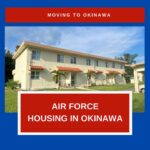Moving to a new duty station can be both exciting and daunting, especially when it involves relocating to a foreign country like Japan. For Marine Corps families PCSing (Permanent Change of Station) to Okinawa, understanding the ins and outs of housing arrangements is crucial for a smooth transition. Here’s a comprehensive guide to help you navigate the process seamlessly.
There is currently a housing shortage in Okinawa due to do land give-backs to the Government of Japan, ongoing construction delays, and housing renovations. This is mostly affecting those located in Central Okinawa (Camp Foster and Kadena Air Base). You can learn more about the housing shortage in Okinawa by clicking here.
Base Housing: Live Where You Work
Upon arrival in Okinawa, Marine Corps families are placed in housing based on the location of the service member’s duty station, following the principle of “live where you work.” It’s important to note that all housing applications and assignments are processed through Kadena Housing, irrespective of the branch of service (Marine Corps, Army, Navy, or Space Force).
Marine Corps Housing in Okinawa: On-Base Housing Options
Base housing in Okinawa offers various styles, including apartment towers, duplexes, and single-family homes. The type of housing assigned depends on both the base location and the service member’s rank.
The Kadena Air Base Housing page has a list of housing options, floor plans, and pictures for those living on base. It’s not completely comprehensive, so below are some other places to look at videos and floor plans.

Camp Foster, Camp Lester, and Plaza Housing Playlist
Please note that Kishaba Terrance, Old Lester, and some Plaza homes are being demolished and/or renovated and are not available for occupancy due to land give-back and construction. You can read more about the housing shortage in Okinawa here.
Videos will be updated as available.
This is a full playlist of 12 videos provided by Col. Vincent Ciuccoli (Ret) of all housing aboard Camp Foster, Camp Lester, and Plaza.
Camp Shields, Camp Courtney, and McT Housing
Options for Marine Corps Housing in Okinawa: On-Base Housing
- Select a Home Upon Arrival:
Families opting for this route may experience a wait for available housing. However, upon arrival, they have the opportunity to choose from available homes. - Port to Home:
This option allows families to secure housing before arrival. By applying for Port to Home in advance and providing flight details, families receive three housing options. While ideally, these options are in different housing areas, this isn’t always the case. Families must select one of the provided houses, typically with the assistance of a sponsor who can provide photos or a video tour.
Please note that there is a current and ongoing housing shortage in Okinawa. You can read more about the housing shortage here.
Want to see where you are on the list? Check out the base occupancy list here.
Off-Base Housing Considerations
While living off-base is an option, it’s subject to approval, typically contingent upon the base housing reaching 98% capacity. Approval for off-base housing is not guaranteed and may vary depending on circumstances.
Interested in living off base? Check out this article.
Learn more about Port to Home here.
Responsibilities and Logistics
- Sponsor Support: Your sponsor plays a crucial role in facilitating the housing process. They assist in selecting a home, signing documents on your behalf, and arranging for the arrival of government furniture and loan locker items.
- Furniture Provision: Upon arrival, government-provided furniture includes a queen bed for the master bedroom, a twin bed for additional rooms, dressers, a kitchen table, and a couch. However, families are responsible for providing bedding.
- Furniture Pickup: Families must schedule furniture pickup for the day before their household goods (HHG) arrival, as same-day pickup is not available.
- Government Furniture Usage: Families have 90 days to utilize government furniture before returning it.
- Internet: Get connected before you even arrive in Okinawa. With MBC, you can get your Internet set up in your new home and have your modem delivered by your sponsor or by MBC so that you are connected to friends and family the moment you walk in the door.
Navigating housing arrangements when PCSing to Okinawa can seem complex, but with the right knowledge and preparation, Marine Corps families can transition smoothly into their new living arrangements. Whether opting for on-base or off-base housing, understanding the process and responsibilities ensures a successful start to your journey in Japan.

Want all this information in one spot? Grab our FREE Ultimate PCS Guide to Okinawa!
Drop your email and we will send you an ebook version of our guide, as well as send you updates on things to do here in Okinawa!






